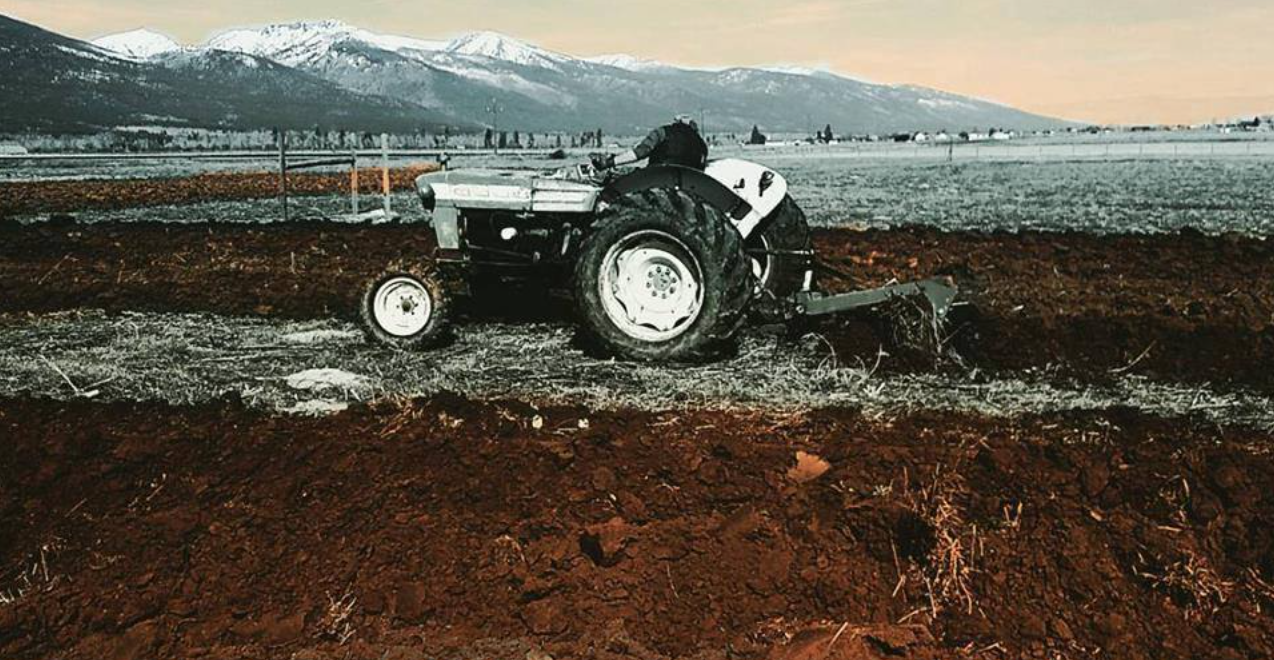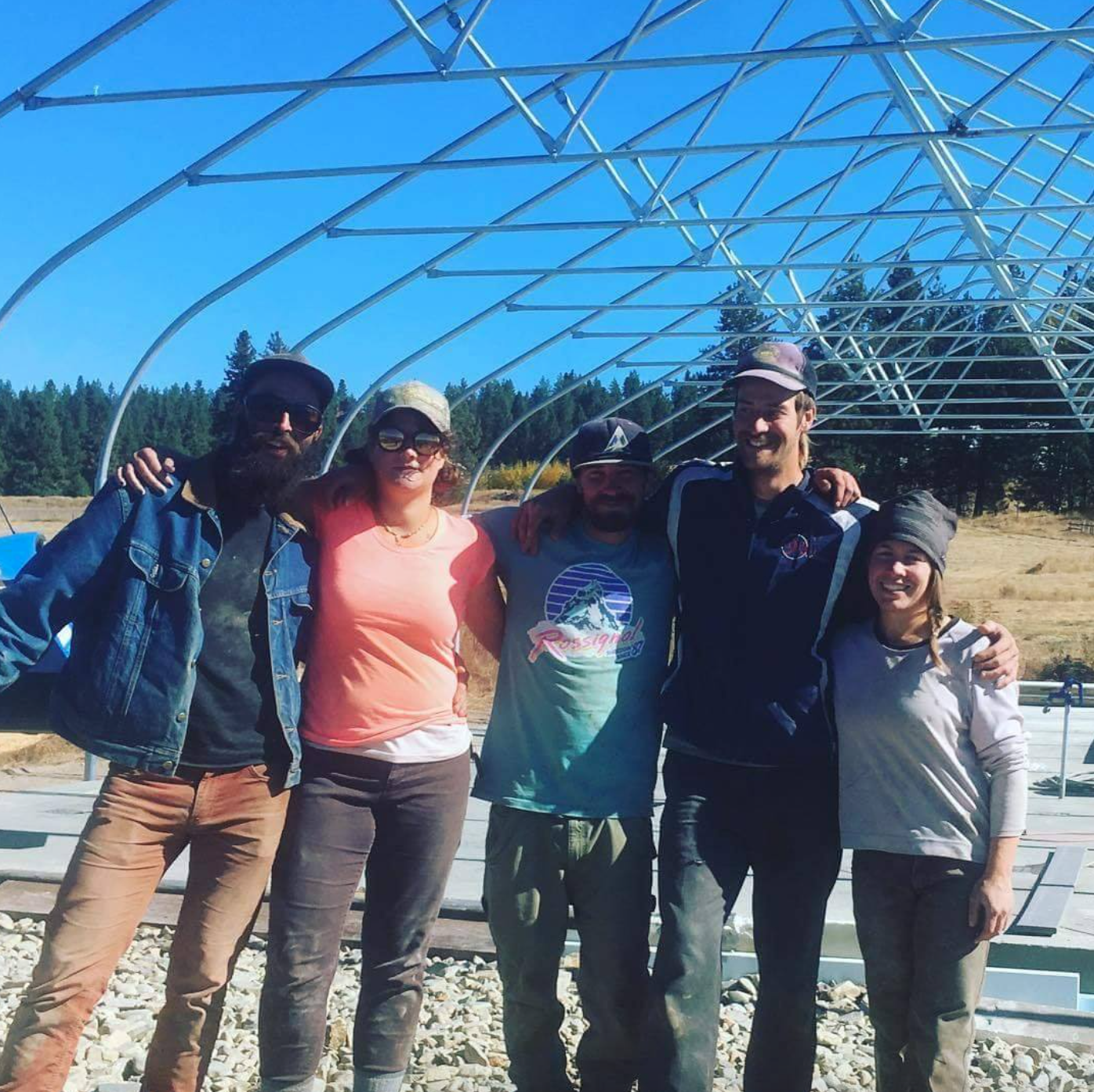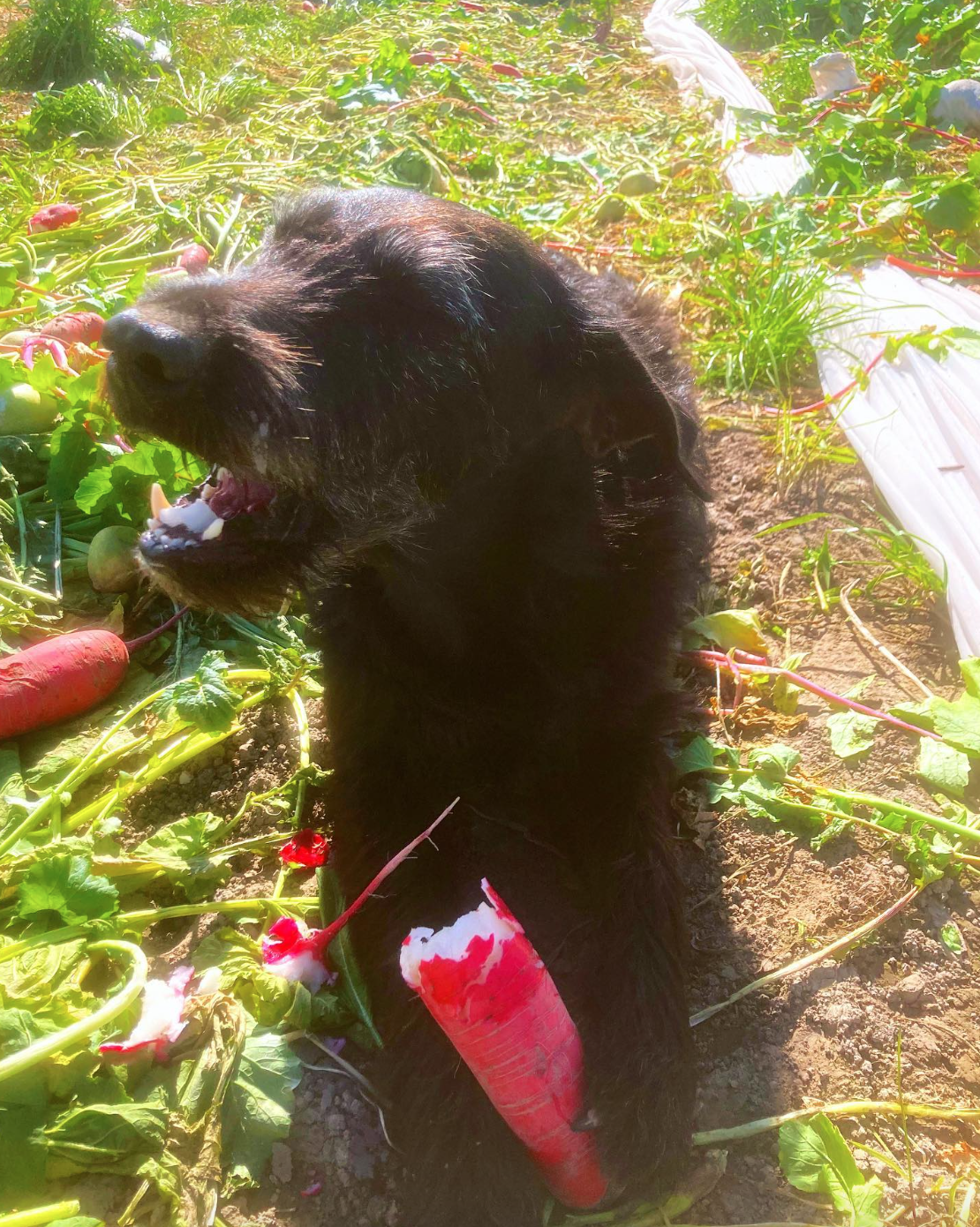History of the Farm
In form and function, Winter Kissed Farm is unique for Western Montana. Here are some pieces of our puzzle we'd like you to know about.
Since its inception in 2015, the farm was a worker cooperative of two farmers — Kenny and Max. This duo grew to four farmers by 2018 when Katelyn Madden and Barret Turkington joined the business. But this isn’t a “pull yourself up by your bootstraps” story. As you’ll learn, we wouldn't have made it this far without an extensive network of friends and community members who support our work through projects ranging from infrastructural development to artistic outreach (namely the Missoulian, Parker Beckley).
As a result of this support, we are a growing force for local food production in the state.
Evidence of our work can be found (and eaten) at Missoula farmers markets in May and June, and through our CSA programs with deliveries to the following cities:
Hamilton, Helena, Kalispell, Missoula, and Stevensville.
Together within the skeleton of the new wash/pack building.
Max and Katie harvesting from incredible soils where compost had fueled great growth.
After growing at three different farmscapes, we call Stevi home.
We've learned a lot in our three land tenures. The hardest lesson we described in a late-season newsletter in 2014. But the far more interesting story is in our trial and error search for a land arrangement that would be "just right." This is known to some as the "Goldilocks method of farming", or "Goldilocks-ing-it" for short.
The first land lease began when Max posted a wanted ad online, titled"Young Farmer Seeking Irrigated Land." For months, he'd waded through the Community Food and Agriculture's Land Link program, a well-constructed dating service for land seekers to meet land owners. Through correspondence and visitations, nothing shook out of the Land Link database. The weather started to turn. By October the garlic needed to be planted if the next season was going to be anything resembling a successful harvest. He pressed on with his search and made a Craigslist post introducing his goals and experience, plus his willingness to work in exchange for a chunk of soil. Within a few days, he had a couple nibbles to investigate. But what young man would go out property-gazing alone? He invited his mother to join in the fun. As it turned out, this was a solid choice. A kind family 15 miles from Missoula was struck by Max and his mother enough to offer him a work-trade arrangement the following spring. He would carry irrigation pipes across the family's hay fields in exchange for eight acres of soils formed by the canyon's creeks. An incredible arrangement, considering Max's lack of capital to buy land outright, and his uncertainty about what capital he could raise in the first years of production.
So instead of sinking money into land he wasn't sure of, the landlords allowed Max and volunteers to live on the property in tipi's, cots and tents. Several of Max's friends had volunteered to help grow produce and live out on the land in 2013. In order to continue growing a farm and not a garden's amount of land Max needed a commitment to growing the business in 2014. This second year, he made another Craigslist post that might as well have been titled "Join the farmer cooperative."
Lucky for him, one of the respondents was a Utah-man named Kenny. The two worked hard alongside new members of the volunteer crew, producing food for more than 30 members of the farm. And at the end of the season, Kenny joined the farm business as a cooperative member. As the two-year lease was coming to a close and the land was about to turn back into pasture, Max and Kenny began looking for the next bit of land to grow on. They discovered a possible farm North of Missoula. And after many conversations they moved equipment and supplies up to the land. But when that arrangement didn't work out, they decided to put the farm on hold until another promising opportunity arose.
Luckily, Marta and Tim (two CSA members) had seen what Max, Kenny and Co. were capable of and, driven by the Slow Money ethic of investing, they purchased land for the Missoula Grain and Vegetable Co. to lease long-term for seven years.
working like dogs and eating like kings in stevensville
There was nothing on the land in Stevensville when we started. No electricity. No irrigation infrastructure. No place to wash and pack and store vegetables. No housing. No greenhouses. But there was tremendous silty loam soil. The other stuff… it would come… thanks to grants from the National Resource Conservation Service and a whole lot of sweat equity from the worker cooperative members and also our landlords who would commute to the farm nearly every day to help build out irrigation infrastructure and the farm’s first tiny house.
By 2018, the farm soils had been improved by manures and cover cropping. And we were producing food better ever. This surplus allowed worker cooperative farmers to attend four different farmers markets on the same Saturday each week of the growing season. Katie traveled the furthest to the Helena market. Barret manned the Stevensville market. Kenny took on the Missoula Clark Fork Market. And Max held down the Hamilton market. This was an exhausting weekly exercise, especially coupled with two mid-week markets. But we were trying to make a living together, and testing just how much food we could grow with only one small tractor and very limited mechanical equipment.
Winter Growing Begins
Despite this flurry of activity at farmers markets, Winter Kissed gThe pandemic changed the course of the farm tremendously.
In the meantime, we hope to feed you and further involve our Farm with the community through local farmer's markets, farm events, and partnerships with other local businesses. We are on transitioning land and will become certified organic in the 2017 growing season. We strive to improve the soil each year by employing minimal till practices and by sourcing local inputs to improve nutrient and microrganism levels.















